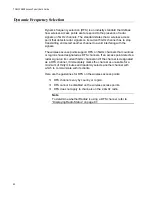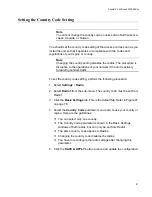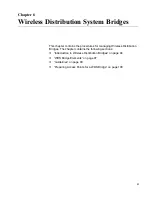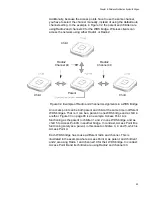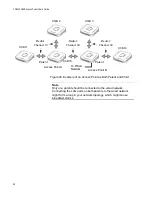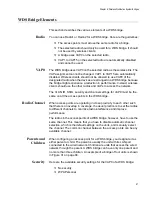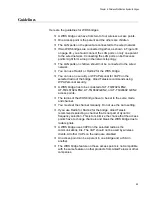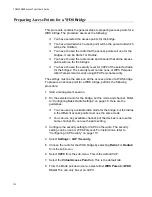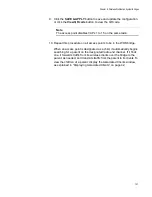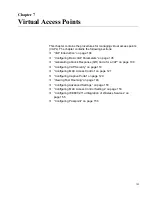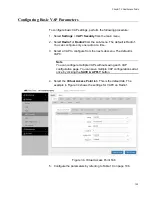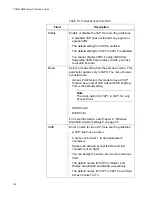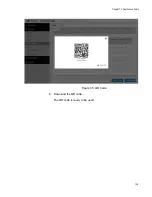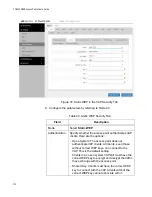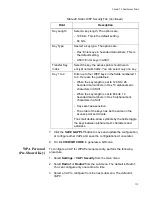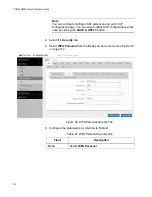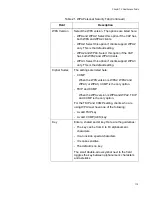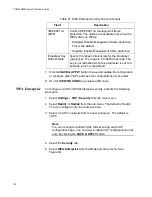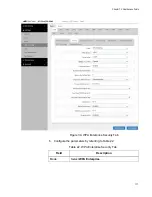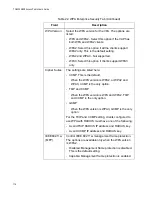
TQ6000 GEN2 Access Points User’s Guide
104
VAP Introduction
Virtual access points (VAPs) are independent broadcast domains that
function as the wireless equivalent of Ethernet VLANs. They are seen by
clients as independent access points, with their own VIDs, SSIDs, and
security methods.
VAP parameters are divided into these two groups:
“Configuring Basic VAP Parameters” on page 105
“Configuring VAP Security” on page 110
VAP Guidelines
Here are guidelines to configuring VAP:
Each radio can have up to eight VAPs. Allied Telesis recommends
no more than five VAPs per radio for best performance.
The VAPs are numbered from 0 to 15.
You can enable or disable the VAPs individually, except for VAP0,
which can only be disabled by disabling its radio.
You can enable 16 VAPs per radio.
The VAPs of a radio can have different security methods.
VAPs can have the same or different VLAN IDs.
The available VAP securities are Static WEP, WPA Personal, and
WPA Enterprise. OSEN is not supported.
Static WEP can be selected only when the Radio mode is set to
IEEE 802.11b/g or IEEE 802.11a.
The IEEE802.11u setting is not supported.
Passpoint is not supported.
Summary of Contents for TQ6000 GEN2
Page 4: ......
Page 8: ...TQ6000 GEN2 Access Points User s Guide 8 ...
Page 12: ...TQ6000 GEN2 Access Points User s Guide 12 ...
Page 16: ...TQ6000 GEN2 Access Points User s Guide 16 ...
Page 40: ...TQ6000 GEN2 Access Points User s Guide 40 Figure 6 Log Window for Event Messages ...
Page 68: ...TQ6000 GEN2 Access Points User s Guide 68 ...
Page 92: ...TQ6000 GEN2 Access Poinst User s Guide 92 ...
Page 102: ...TQ6000 GEN2 Access Poinst User s Guide 102 ...
Page 156: ...TQ6000 GEN2 Access Points User s Guide 156 Configuring Passpoint Passpoint is not supported ...
Page 159: ...Chapter 8 Quality of Service 159 Figure 55 QoS Window ...

